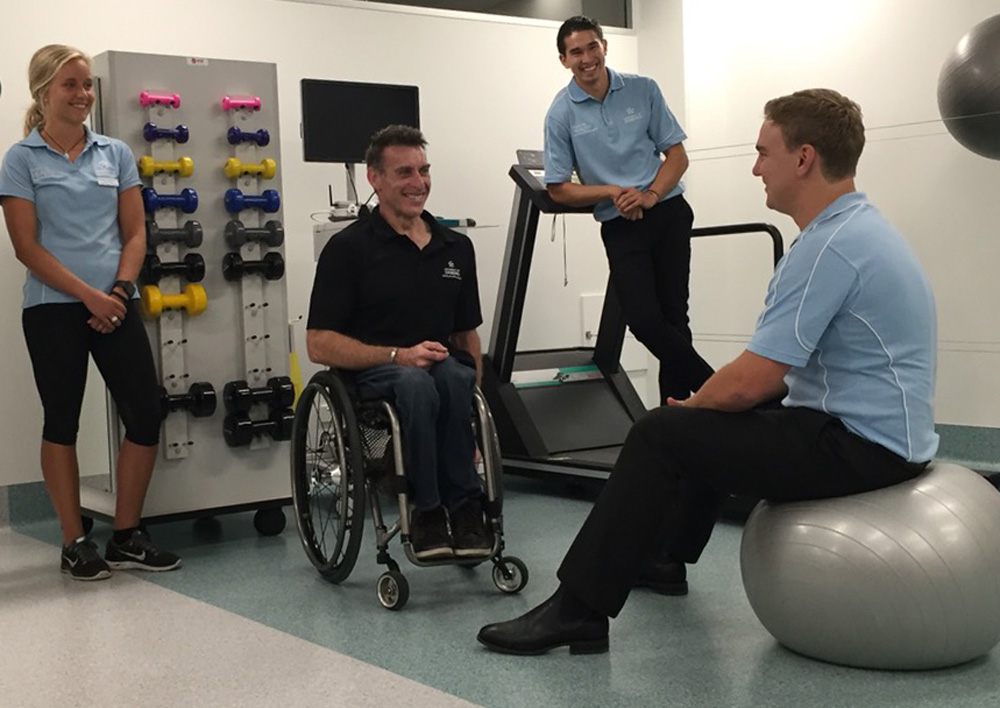Antony Perry
11 January 2017: Richard Nicholson remembers the roar of 110,000 spectators as he entered Stadium Australia during the opening ceremony at the 2000 Sydney Paralympic Games.
The unbridled joy of competing at a home Paralympics, he said, is seldom matched.
“Very few athletes have the luxury of competing at a home Games,” Mr Nicholson, the University of Canberra 2016 athlete in residence, said. “Very few get the opportunity to experience that. I’m lucky that I did, and it remains a career highlight of mine to this day.”
Mr Nicholson didn’t know it at the time, but his campaign would be augmented just days later by a silver medal in powerlifting – an accolade the five-time Paralympian describes as his “best moment athletically”.
There is no shortage of those moments in Mr Nicholson’s decorated career, which he drew upon to inspire and empower students at the University of Canberra, as part of his role.
“I’ve always liked creating opportunities for others,” Mr Nicholson said. “If I’m involved in programs that encourage people to get involved in sport, then I’m happy. It’s something I’ve always cherished.”
The University’s athlete in residence program is an initiative led by the Faculty of Health and Faculty of Arts and Design.
The 46-year-old was the second athlete – track and field athlete Melissa Breen was the first – to take part in the program, which aims to enrich staff and students’ experiences by allowing close access to elite Australian sportsmen and sportswomen.
Mr Nicholson’s appointment gave students the opportunity to work with and learn from the three-time Paralympic medallist and his experience as an elite athlete. The program saw him also assist in a variety of research projects across disciplines such as sports and exercise science, health, media and education.
While his experience as an elite athlete undeniably assisted him in the role, a greater source of inspiration for staff and students was perhaps his pilgrimage to the world stage.
Mr Nicholson was just four years old when he contracted a rare illness and lost the use of both legs, but paraplegia wasn’t about to stop him from being active.
He recalls using a skateboard to follow his friends around, wearing “the prints off my fingertips”. But his life really changed when Max Green, a high school physical education teacher, intervened.
“Mr Green threw me up on the roman rings one day because he was sick of me sitting at the side of the gym during sport class doing nothing,” Mr Nicholson, who was 12 at the time, said.
Things fell into place after that.
“Mr Green then registered me in a local gymnastics competition and it was at that competition that I met a guy who ran a club not far from my house. He said, ‘Come down and start training with us’.”
At 24 Mr Nicholson began participating in disability-specific sports. He would go on to compete at five Paralympics between 1996 and 2012, claiming a silver medal in Athens in 2004 and a bronze in London in 2012 (both in athletics), in addition to the silver medal he won in Sydney.
“Mr Green had an idea to get me moving and created opportunities for me to do so,” Mr Nicholson said, crediting his teacher with changing the direction in his life.
This experience was the basis of his advice to UC staff and students during his time on campus.
“Never underestimate the possibility to make a difference in someone’s life,” he said.
“It might be the right word at the right time that spurs someone on to try something new and have a life-changing moment. I think the world would be a better place if more people took that on board – trying to change peoples’ lives for the better.”
The 2017 athlete in residence will be announced in early February.



